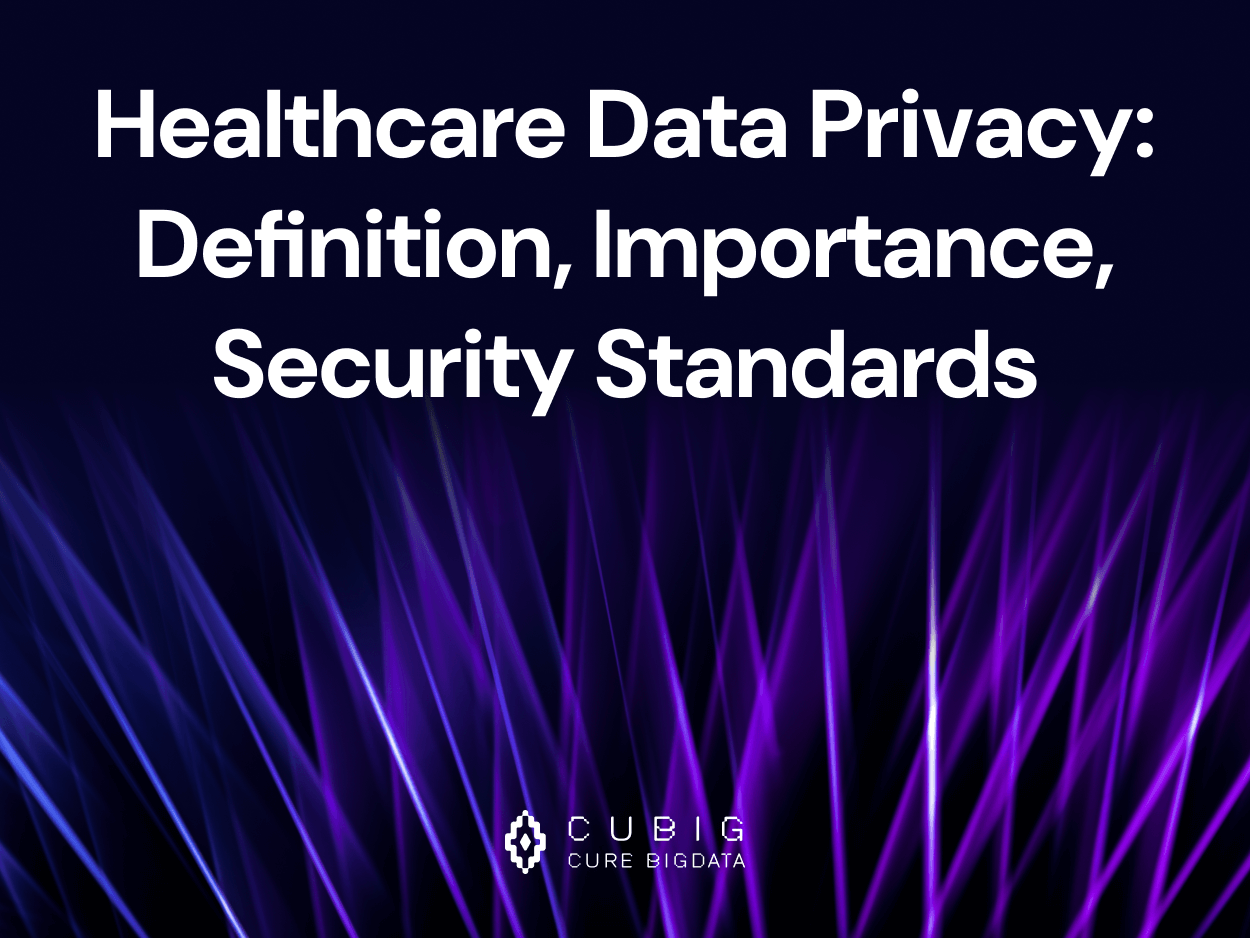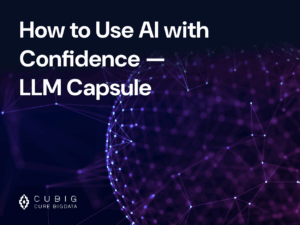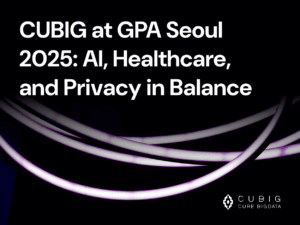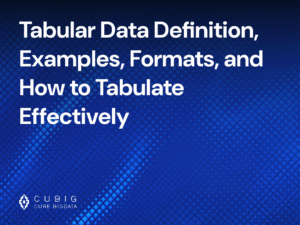Healthcare Data Privacy: Definition, Importance, Security Standards
Table of Contents
What is Healthcare Data Privacy?
Definition and Importance
Healthcare data privacy refers to a comprehensive set of policies, technologies, and ethical principles aimed at safeguarding patient health information (PHI) from unauthorized access, disclosure, or misuse. PHI includes a wide range of sensitive data such as patient names, addresses, medical histories, diagnostic results, treatment plans, insurance numbers, and even biometric or genetic identifiers. Protecting this information is critical not only to comply with legal standards but also to preserve patient dignity and ensure the safe delivery of care. Effective privacy protection ensures that data is accessed only by authorized healthcare professionals, and only for well-defined, medically necessary purposes. Underlying this protection are the core principles of confidentiality (preventing unauthorized access), integrity (ensuring the data is accurate and unaltered), and availability (ensuring timely access for those who are permitted). These principles must be upheld at every stage of the data lifecycle—from initial collection and electronic storage to secure sharing, archiving, and eventual deletion.
Why is Data Privacy Important in Healthcare?
Trust, Compliance, and Ethical Responsibility
Healthcare is inherently personal and depends on trust between patients and medical professionals. In order to receive accurate diagnoses, effective treatment, or even preventive care, patients must feel safe in disclosing private information about their physical, emotional, and genetic conditions. Any breach of that privacy can cause serious harm, both medically and emotionally. If patients suspect their data might be misused, they may withhold critical details, which could lead to misdiagnosis or inappropriate treatment. Ensuring privacy fosters openness and transparency in care relationships.
Beyond the clinical importance, data privacy is a legal obligation. Regulations like the Health Insurance Portability and Accountability Act (HIPAA) in the United States and the General Data Protection Regulation (GDPR) in Europe define strict standards for data handling, consent, data minimization, and breach notification. Non-compliance can lead to substantial financial penalties, reputational damage, and legal consequences. Ethically, the healthcare industry is bound to uphold patient rights—this includes autonomy, informed consent, and control over how personal information is used. Respecting these rights is not only a matter of compliance but of moral duty. Privacy breaches can lead to discrimination, stigmatization, or social harm, especially when they involve mental health records, HIV status, reproductive care, or genetic predispositions.
Key Standards and Regulations for Healthcare Data Security
Global Frameworks for Compliance
Healthcare data is subject to a range of global, national, and sector-specific regulations, all designed to protect personally identifiable health information (PHI) and prevent unauthorized use or disclosure. These frameworks define not only how data should be stored and accessed, but also how it should be shared, audited, and, when necessary, destroyed. In the United States, the Health Insurance Portability and Accountability Act (HIPAA) is the primary legislation governing healthcare data. It includes the Security Rule, which outlines technical safeguards like encryption standards, multi-factor authentication, and system monitoring, and the Privacy Rule, which governs patient rights such as access, correction, and consent regarding their own data. HIPAA also requires business associate agreements (BAAs) to ensure that third-party vendors comply with equivalent levels of security when handling PHI.
In the European Union, the General Data Protection Regulation (GDPR) offers one of the most stringent and far-reaching data protection regimes in the world. Unlike HIPAA, which is sector-specific, GDPR applies to all personal data, including health data, across all industries. It mandates explicit consent for processing sensitive data, restricts cross-border data transfers, and emphasizes data minimization—collecting only the information necessary for the task. Organizations must also conduct Data Protection Impact Assessments (DPIAs) for high-risk processing activities involving health data and are legally obligated to notify authorities and affected individuals of data breaches within 72 hours. Failure to comply can result in fines of up to 4% of global annual turnover, making adherence a top priority for healthcare organizations operating in or serving EU residents.
Other countries have adopted similar, though distinct, regulatory frameworks tailored to their local healthcare systems. In Canada, the Personal Information Protection and Electronic Documents Act (PIPEDA) governs data protection in the private sector and includes specific guidelines for how health information should be managed across provincial boundaries. Some provinces, such as Ontario, also have their own health-specific regulations like the Personal Health Information Protection Act (PHIPA). In Australia, the Privacy Act 1988—enforced by the Office of the Australian Information Commissioner—includes a set of Australian Privacy Principles (APPs), which cover the collection, use, and storage of health information. These principles also address cross-border data flows and require that overseas recipients uphold equivalent protections. In Asia, South Korea’s Personal Information Protection Act (PIPA) is known for its strong consent requirements and heavy penalties for violations. Similarly, Japan’s Act on the Protection of Personal Information (APPI) and Singapore’s Personal Data Protection Act (PDPA) both include clauses addressing health data specifically, with obligations around consent, access rights, and breach notification.
Beyond governmental regulations, healthcare organizations must also adhere to a growing set of international security standards and certification programs. HITRUST, widely used in the U.S., provides a certifiable framework that integrates HIPAA, NIST, ISO, and GDPR requirements into a single assurance program. The ISO/IEC 27701 standard serves as an extension of ISO 27001 for privacy management, offering a globally recognized structure for implementing privacy controls across systems handling PHI. The NIST Cybersecurity Framework (CSF), while originally designed for U.S. critical infrastructure, has been widely adopted by healthcare organizations to assess risk, detect threats, and guide response planning. In many cases, these standards serve as a de facto benchmark for vendor selection, insurance underwriting, and interoperability certification.
Organizations operating across borders or in highly regulated environments must often reconcile conflicting standards and adapt to evolving compliance landscapes. This requires a layered approach to governance, involving policy frameworks, technical enforcement, staff training, regular audits, and real-time monitoring. As new technologies such as cloud computing, telehealth platforms, and AI-based diagnostics become more integrated into care delivery, staying compliant with diverse and dynamic regulatory standards is not just a legal necessity—it’s a prerequisite for trust, credibility, and operational resilience in modern healthcare.
Common Data Privacy Concerns in Healthcare
Challenges Faced by Organizations
Maintaining robust data privacy in the healthcare sector is an ongoing and complex challenge, largely due to the high sensitivity of patient information, the heterogeneity of systems in use, and the number of stakeholders involved. Electronic Health Records (EHRs), medical imaging systems, insurance platforms, and patient portals are often interconnected but not uniformly secured, creating numerous potential attack vectors. One of the most frequent and damaging concerns is unauthorized access to PHI (Protected Health Information). This may result from poorly implemented role-based access control (RBAC), the widespread practice of shared logins among staff, or insufficient segmentation between clinical and administrative systems. In some high-profile cases, breaches have occurred simply because access permissions were too broad or left unchanged when employees shifted roles.
Insider threats, though sometimes overlooked, represent a substantial risk. These threats may stem from malicious intent—such as snooping on VIP patients—or from negligence, such as accessing patient records out of workflow convenience. Even well-meaning clinical staff can unintentionally trigger compliance violations by accessing records they are not explicitly authorized to view. For example, a nurse pulling up the full records of a patient not assigned to their ward, even for clinical curiosity, may violate HIPAA or institutional policy. These actions, though often non-malicious, can erode patient trust and lead to disciplinary or legal consequences.
Consent management is another critical area of concern. As data is reused for multiple purposes—such as billing, public health reporting, academic research, and quality assurance—organizations may unknowingly exceed the scope of the original patient consent. While initial data collection is typically covered by treatment-based consent, subsequent uses may fall into grey areas unless patients are explicitly informed and given opt-in or opt-out choices. This is particularly problematic under GDPR, where purpose limitation and informed consent are foundational principles. Ambiguity in consent documentation or lack of audit trails can quickly escalate into compliance violations.
Externally, cyber threats are growing in scale and sophistication. Healthcare institutions are increasingly targeted by ransomware groups, cybercriminals, and state-sponsored actors due to the high value of health data and the critical nature of operations. Stolen medical records can be sold on the dark web, used for identity fraud, or leveraged for targeted social engineering attacks. Many hospitals still rely on legacy infrastructure with outdated operating systems, unpatched vulnerabilities, and weak endpoint protections. Combined with insufficient logging and intrusion detection, this creates fertile ground for data breaches. Even cloud-based systems, if misconfigured, can expose vast amounts of PHI publicly—an increasingly common issue as digital transformation accelerates.
To address these multifaceted risks, healthcare organizations must adopt a layered defense strategy. This includes implementing strict identity and access management (IAM) policies, continuous staff training on privacy best practices, real-time monitoring and anomaly detection, and frequent penetration testing. Regulatory compliance alone is no longer sufficient—privacy and security must be embedded into the design of clinical workflows, third-party vendor contracts, and IT architectures. As attackers grow more sophisticated and data usage expands, proactive governance and a culture of privacy awareness become essential to protecting both patient rights and institutional integrity.
Examples of Privacy and Confidentiality in Practice
Real-World Scenarios
To address privacy and confidentiality risks, healthcare organizations are implementing a range of layered safeguards that span across technology, policy, and patient engagement. One of the most impactful developments is the integration of consent management platforms into electronic health record (EHR) systems and patient-facing applications. These platforms allow individuals to review who has accessed their data, define consent boundaries, and dynamically grant or revoke permissions based on context. For instance, a patient may choose to allow their anonymized data to be used for academic research but restrict any use for pharmaceutical marketing. By embedding consent options directly into mobile health apps and online portals, healthcare providers are shifting control to the patient, enhancing transparency and trust.
For retrospective data analysis, especially in research or public health initiatives, healthcare organizations employ a combination of anonymization, de-identification, and advanced privacy-preserving techniques. Anonymization methods may include generalizing date-of-birth to age ranges, suppressing rare diagnoses, or redacting geographic identifiers. Pseudonymization replaces direct identifiers with randomized keys, maintaining data utility while decoupling it from patient identity. In high-risk contexts, these methods are augmented by differential privacy algorithms that introduce statistically calibrated noise into aggregated outputs—ensuring that results remain useful while mathematically bounding the risk of re-identification. These techniques enable institutions to participate in collaborative studies, model disease trends, and test AI systems without compromising individual privacy.
Within clinical settings, access control is rigorously enforced through role-based access control (RBAC), where permissions are assigned according to job roles—such as physicians, nurses, billing staff, or pharmacists. More advanced systems use attribute-based access control (ABAC), which takes into account contextual variables such as location, time of access, or relationship to the patient. For example, a cardiologist may be granted access to test results only during active treatment windows, while a researcher might only see anonymized data from a curated dataset. These systems are further backed by policy engines that enforce compliance with organizational rules and external regulations.
Audit logging and proactive monitoring complete the privacy infrastructure. Every interaction with sensitive systems is tracked in immutable logs that record user identity, timestamp, IP address, action taken, and the specific data object accessed. These logs are not only used for routine compliance audits but also serve as a critical source of intelligence during investigations of suspicious activity. Many organizations now leverage AI-powered security information and event management (SIEM) tools that apply behavioral analytics to detect anomalies in access patterns. For example, if a radiologist suddenly accesses hundreds of records outside their assigned department or business hours, the system can trigger alerts, quarantine access, or require re-authentication. This real-time monitoring enables swift incident response and deters inappropriate behavior through accountability.
Collectively, these practices represent a move from reactive, compliance-driven privacy programs to proactive, patient-centric models of trust. By embedding privacy into the fabric of digital health operations—through both technical controls and transparent communication—healthcare organizations are not only meeting regulatory requirements but also strengthening the integrity of care delivery in an increasingly data-driven environment.
Azoo AI’s Role in Enhancing Healthcare Data Privacy
Privacy-First Synthetic Data Generation
Azoo AI enables the creation of private synthetic data that mimics the statistical structure of real healthcare datasets without containing any actual patient records. This allows healthcare providers to safely leverage data for research, training, and analytics while avoiding the risks of re-identification or regulatory violations. Synthetic data generated by Azoo maintains high analytical fidelity, making it suitable for complex tasks such as clinical trial simulation, population modeling, and AI algorithm development.
Data-Inaccessible Architecture
Unlike conventional platforms, Azoo’s architecture ensures that source data never leaves the secure client environment. The generative model operates solely on structured prompts or metadata, generating multiple candidate outputs. A differential privacy-based voting mechanism then runs on the client side to select outputs that meet both privacy guarantees and utility thresholds. This process ensures that sensitive information remains protected throughout the entire pipeline.
Regulatory Compliance by Design
Azoo AI’s approach is aligned with major healthcare privacy regulations such as HIPAA, GDPR, and PIPEDA. Because the synthetic datasets contain no real-world records and are validated against strict privacy criteria, they are typically exempt from regulatory restrictions. This allows healthcare organizations to share, analyze, and innovate with data—legally and ethically—across departments, vendors, and even international borders, without compromising patient confidentiality or trust.
Steps to Ensure Data Privacy in Healthcare
Strategic Implementation Approach
A comprehensive data privacy strategy in healthcare requires both a top-down governance structure and bottom-up technological safeguards. It must integrate legal compliance, IT infrastructure, clinical workflows, and staff behavior into a unified framework. The following five-step approach outlines the core pillars of building a privacy-resilient healthcare data environment.
1. Conduct Risk Assessment
The first step in any privacy program is a thorough assessment of where sensitive data resides, how it flows, and what threats it may face. This includes identifying all sources of protected health information (PHI)—such as electronic health records (EHRs), lab systems, imaging archives, and third-party integrations. Map data flows across internal systems, cloud platforms, and external vendors. Classify PHI by sensitivity (e.g., genetic data, mental health notes, billing records) and assess risk using a structured methodology such as NIST SP 800-30 or ISO/IEC 27005. The output informs prioritization, helps allocate security budgets, and defines the controls needed to reduce risk to an acceptable level.
2. Define Privacy Policies
Develop and document comprehensive privacy policies that align with regulatory requirements such as HIPAA, GDPR, or local health data protection laws. Policies should cover the full data lifecycle: collection (including patient consent), processing (e.g., clinical workflows, analytics), access (role-based or attribute-based permissions), storage (e.g., encrypted servers, cloud governance), retention (based on legal minimums and medical necessity), and disposal (secure erasure protocols). Assign policy ownership to privacy officers and schedule periodic internal audits to ensure ongoing compliance and update procedures in response to regulatory changes or new technology deployments.
3. Use Privacy-Enhancing Technologies
Deploy modern privacy-enhancing technologies (PETs) as the foundation of technical safeguards. Encrypt all PHI both at rest and in transit using industry standards such as AES-256 and TLS 1.3. Implement differential privacy mechanisms in analytics dashboards and research pipelines to ensure that aggregate statistics cannot reveal individual identities. Use pseudonymization or tokenization to replace direct identifiers (e.g., names, MRNs) with non-identifiable references. In research settings, generate synthetic datasets with privacy guarantees to support algorithm development without exposing real patient records. Apply fine-grained access control using RBAC or ABAC systems and enforce multi-factor authentication across all access points.
4. Train Staff Regularly
Human error remains one of the top causes of data breaches in healthcare. Regular, role-specific training is critical to ensure staff understand their responsibilities and how to handle sensitive data appropriately. Privacy training should be mandatory at onboarding and repeated at least annually. Include real-world case studies of privacy incidents, mock breach response drills, phishing simulations, and role-based best practices (e.g., clinician vs. IT admin). Supplement training with easily accessible reference materials and in-system prompts that reinforce correct behavior (e.g., alerts before exporting PHI). Document all training activities for audit readiness.
5. Monitor and Audit Data Access Continuously
Implement real-time monitoring of all access to sensitive health data. Logging systems should record who accessed what data, when, from where, and for what purpose. Use security information and event management (SIEM) platforms integrated with anomaly detection algorithms to flag unauthorized or suspicious behavior—such as mass data downloads, access from unusual locations, or access outside of scheduled hours. Conduct periodic audits to review logs, validate access permissions, and ensure access controls align with current job roles. Automate revocation of access for terminated staff and notify administrators of policy violations to enable timely corrective actions.
Benefits of Strong Data Privacy Practices
Organizational and Patient-Level Advantages
A robust healthcare privacy program yields significant advantages across clinical, operational, and strategic dimensions. For patients, strong privacy practices reinforce trust in the institution, encouraging them to share sensitive information more openly—ultimately improving care quality, continuity, and outcomes. Patient engagement with digital tools like patient portals or mobile health apps also increases when privacy controls are transparent and intuitive.
From an organizational perspective, effective privacy governance reduces the risk of regulatory penalties, reputational harm, and costly breach recovery efforts. It enhances compliance with evolving laws like GDPR, HIPAA, and the EU AI Act. Internally, clear privacy policies and structured workflows support consistent data handling practices across departments, improving operational efficiency and accountability. Moreover, by enforcing validation rules and metadata standards, privacy practices indirectly improve data quality, which is essential for clinical decision-making, AI model training, and population health analytics.
Strong privacy controls also unlock the ability to share data safely across organizations and research partners. For example, when synthetic data or differentially private datasets are used, healthcare providers can contribute to multi-center research, AI development, and policy modeling without compromising patient confidentiality. In this way, privacy is not a barrier to innovation—but a catalyst that enables ethical, scalable, and sustainable healthcare data ecosystems.
Challenges in Implementing Data Privacy Measures
Barriers to Adoption
Healthcare organizations face a unique blend of structural, financial, and operational challenges when trying to implement robust data privacy measures. One of the most significant technical barriers is the reliance on legacy IT infrastructure, including outdated electronic health record (EHR) systems that lack native support for modern privacy safeguards such as zero-trust architectures, granular access policies, or real-time monitoring tools. These systems are often difficult to upgrade or integrate with newer technologies without disrupting clinical workflows. Financial constraints add another layer of difficulty—especially for smaller clinics, rural hospitals, and public-sector providers—which may lack the budget to invest in advanced encryption, secure data lakes, or cloud-based privacy services.
Compounding these issues is a global shortage of professionals with the combined skill sets of data privacy, cybersecurity, and healthcare informatics. Hiring qualified privacy engineers, compliance officers, or AI security specialists can be especially difficult for organizations located outside major metropolitan centers. Strategic alignment is also a concern; while IT teams may prioritize operational uptime or EHR usability, leadership may not fully grasp the importance of proactive privacy engineering until a breach or audit occurs. Finally, regulatory complexity across jurisdictions—where laws such as HIPAA, GDPR, PDPA, and LGPD may apply differently—creates a fragmented and often contradictory landscape. This limits the feasibility of cross-border research, data exchange, and multi-national AI development, even in public health emergencies where data sharing is critical.
Comparison: Traditional vs Privacy-Preserving Data Use
Traditional methods of protecting patient data have centered on de-identification or anonymization, which typically involves stripping datasets of direct identifiers like names, social security numbers, and phone numbers. While these approaches offer some level of privacy, they are increasingly seen as insufficient in the era of big data, where re-identification attacks using auxiliary datasets are well documented. Additionally, traditional anonymization often degrades data utility—making it difficult to conduct meaningful analytics, train machine learning models, or preserve longitudinal patterns in patient histories.
Privacy-preserving approaches such as synthetic data generation offer a paradigm shift. Synthetic datasets are created by training generative models on real patient data to learn its underlying structure, and then generating new records that maintain statistical fidelity without reproducing any real individual’s information. This technique enables high-utility use cases—such as clinical trial simulation, algorithm validation, and public health policy testing—while dramatically reducing privacy risks. Because synthetic data does not contain actual personal records, and lacks persistent identifiers, it is often exempt from privacy regulations like HIPAA or GDPR, as long as re-identifiability remains mathematically improbable. This makes synthetic data a powerful alternative for innovation, regulatory compliance, and secure collaboration.
How Healthcare Data Privacy is Evolving
From Manual Protections to AI-Driven Safeguards
The evolution of healthcare data privacy is moving away from reactive, manual protection methods and toward integrated, AI-powered systems capable of enforcing security dynamically and at scale. Privacy-enhancing technologies (PETs), once considered optional or experimental, are now becoming foundational to digital health infrastructure. Federated learning, for example, allows algorithms to be trained across distributed healthcare institutions without exposing underlying patient data—enabling collaborative model development across hospitals, labs, and countries while preserving confidentiality.
Differential privacy adds another layer of defense by mathematically limiting the influence any single individual can have on aggregate results, making it extremely difficult to reverse-engineer specific patient information. Synthetic data generation builds on these principles by enabling the creation of entirely artificial datasets that are statistically accurate but legally and ethically safe to use. This opens up opportunities for open data collaboration, AI testing, and public health modeling without breaching patient trust or violating privacy laws.
Meanwhile, security architecture is shifting toward zero-trust principles, where no device, user, or system is inherently trusted—even within the hospital network. Every access attempt is authenticated, verified, and continuously monitored based on contextual factors such as role, location, and device behavior. Together, these technologies create adaptive, intelligence-driven defenses capable of responding in real time to evolving threats such as ransomware, insider misuse, or data exfiltration attempts. As healthcare organizations adopt these next-generation safeguards, data privacy becomes not only a compliance requirement but also a strategic advantage for patient-centered, innovation-driven care delivery.
FAQs
What is considered private data in healthcare?
Private data in healthcare includes any information that can identify a patient and relates to their physical or mental health, past or present treatment, or payment details. This includes lab reports, imaging records, prescription history, and genetic data.
Why is patient consent important?
Patient consent ensures that individuals have control over how their health data is used. It builds transparency, upholds autonomy, and is often required by law before data can be shared for purposes beyond direct care.
How does synthetic data improve privacy?
Synthetic data is generated from algorithms trained on real data, but it produces entirely new records. Because it doesn’t contain real individuals’ information, it offers a strong layer of privacy while retaining analytical value for research and model development.
What makes Azoo AI different from other solutions?
Azoo AI combines privacy-by-design architecture with advanced generative technology to deliver high-utility synthetic data without compromising patient confidentiality. Unlike many platforms that require direct access to real datasets, Azoo’s system operates without ever exposing source data to the generative model. A client-side differential privacy voting mechanism ensures that only safe, high-fidelity outputs are selected. This approach allows Azoo to meet strict regulatory standards like HIPAA and GDPR while preserving over 99% of the analytical performance of the original data—making it a trusted solution for privacy-conscious healthcare applications.
Is synthetic data legal under HIPAA or GDPR?
Yes. Properly generated synthetic data that cannot be linked back to real individuals is generally considered outside the scope of HIPAA or GDPR. However, it must be validated to ensure no residual identifiers remain, and that it cannot be reverse-engineered into real data.
CUBIG's Service Line
Recommended Posts









